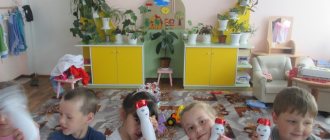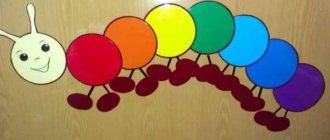Preparing a project at school and the student’s ability to competently present their work are the result of the requirements of a modern educational program. In modern schools, projects are required to be completed on a computer. How to create a school project.
It is assumed that project activities reveal in the child the ability to think and act creatively, develop independence in searching for information and processing it, teach the child to prepare a presentation and present it to the public.
To understand where to start a school project, you need to choose its type. School projects are:
- research - study, consider the topic from different angles; is prepared as a scientific study (a hypothesis is put forward and tested);
- practical, practice-oriented - the result is a solution to a specific problem that can be used in life;
- creative - the result is a creative product, an edited video, a poster, a theatrical performance, a new educational game, a sports game;
- informational - contain the results of collecting information, which is then presented to the public;
- role-based - projects in which roles are distributed and rules of interaction between participants are established. The result of such work becomes known only upon completion; students try themselves in new roles and situations, learn to resolve conflicts while in the image of the chosen role.
Materials, presentation, what the school project consists of and what it looks like will directly depend on the type of project chosen.
How to write a project at school
It all starts with choosing a topic and understanding the end goal. It must be understandable, clear and concise. In order for the work to progress quickly, the student must be interested in the topic. Otherwise, there will be no benefit from project activities. It will not be possible to successfully defend a project that is not even interesting to its creator.
Stages of work:
- Preparatory. We decide on a topic and purpose.
- Planning. We find out what is needed for the project at school, what sources of information we will work with, how we will collect and analyze it. We decide in what form we will present the results of the work.
- Study. We collect and clarify information and carry out research tasks.
- Conclusions. We analyze the information and formulate conclusions.
- Decor. Teachers of each specific educational institution put forward their own requirements for how to draw up projects at school and provide design samples.
At the planning stage, they decide in what form to present the information. Then it is determined what program is needed to create a school project on a computer. At school, for projects within the classroom, it is enough to use the graphic editor Word. They type text in it and supplement it with pictures.
Application of projects in practice
It is clear that in primary school children do not yet have the skills to independently search for the necessary information. Therefore, to begin with, a game form is suitable for them: simple observation of animals, plants, weather. As children grow older, their project tasks should gradually become more complex. The motivation will be practical experience from real life, namely the opportunity to earn money.
A certain idea is taken as a basis. For example, installing a terminal for charging gadgets on the station area. In this case, it’s not enough to want, you first need to think through everything, and then do it:
- Find out everything about the ways of implementation from the point of view of the law;
- Register as an individual entrepreneur (ask your parents);
- Estimate your chances of success, see what problems may arise and how to deal with them;
- Find a suitable location, as well as a responsible person with whom you need to coordinate the installation, etc.
It is clear that a ninth-grader cannot become an entrepreneur right away. But he will form a specific idea, confirmed by practice, of how he can launch his startup.
In theory, everything sounds attractive, of course, but in reality, teachers face certain difficulties:
- Where should the project start?
- How to motivate students;
- How should this approach be incorporated into the school curriculum without compromising the core base.
Benefits to help
The textbook “Design Workshop”, developed by practitioners A.V., deserves special attention. Leontovich, I.A. Smirnov, A.S. Savvichev. In lively and understandable language, the authors tell teachers and children about the intricacies of design and research activities:
- How to bring a project idea to a successful result;
- How to structure your work;
- Errors and ways to solve them are analyzed using examples;
- Advice is given on how to independently prepare for the delivery of the project.
How to register a project
Design of a project in junior classes
The younger the class, the less text and more pictures. After all, the child not only submits a printed project, but must also be able to tell what is written in it and answer questions.
Project structure:
- Title page. At the very top they write the full name of the educational institution. In the middle of the sheet, by . Below, the name of the project is written in bold, large font. Below it, in the right corner, indicate who completed it: the student’s first and last name, class. Then the manager: last name, first name and patronymic. At the bottom in the middle of the sheet write the city and year of the project.
- The table of contents is placed on the second sheet.
- Then comes the introduction. Goals and objectives are written here.
- Main part. In this part, the topic is revealed, you can write step by step: “I started my work with...”, “Then I started to...”, “In my work I encountered such problems...”.
- Conclusion.
Designing a project in high school
The older the student, the more stringent the requirements for the content, quality, quantity of information displayed in the project, and for its design.
What does a school project include?
The final product here can be anything: from a wall newspaper to a model of Ancient Rus'. After all, the main thing is to create something completely new for the student, previously unknown to him.
Solving design problems, one way or another, is included in the plan of every lesson in any discipline. The development of large-scale presentations and the practice of defending them are carried out mainly in extracurricular activities.
Ideally, the principle of this approach to training is based on 3 advantages:
- Self-determination
(while working on a project, the student identifies for himself those areas of knowledge that resonate with him the most); - Self-discipline
(through trial and error, the child learns to independently organize his free and working time);
- Self-realization
(having chosen the most interesting direction for himself, the student begins to use his potential as effectively as possible).
In addition, debates during the defense of a project are an extremely useful and exciting process. Even if a child is not destined to become a speaker or scientist, he will still have to present himself both at work and in society.
Computer presentation vs stand for project work
The presentation of the project should be not only informative, but also interesting. Along with the computer presentation, which is common in every school, there is a poster demonstration. When the board displays the main points of the study in the form of diagrams, drawings or tables. Such a presentation should not be overloaded with data. She acts only as an assistant to the speaker and the audience.
Are there any significant differences between a computer show and a stand show? No, they are essentially the same thing. It’s just that in the presentation the slides go one after another, and on the stand blocks of information appear sequentially:
- Full name of the author and supervisor;
- Relevance of the presented topic;
- The purpose of the project and criteria for the effectiveness of the project (in the study we talk about confirming the hypothesis);
- Project concept (flowchart of work execution, demonstration of the essence of the research process and its objects: these can be area maps, diagrams, photos of samples and teams);
- Resources used.
If desired, the structure can include a list of references, an evaluation of effectiveness and acknowledgments, if any.
Classification
All projects in kindergarten are divided by duration into:
- short-term (several lessons);
- long-term (during the academic year).
A teacher can work with one child (individual activity) or with a group of preschoolers (team work).
A project in kindergarten in the senior group is an excellent way to involve children in active creative activities. This kind of work contributes to the formation of cognitive interest in preschool children and helps the teacher to build for each pupil.
For example, projects in kindergarten make it possible to correct speech problems in children and develop communication skills.
Event plan
The teacher organizes an exhibition for children on the topic “Work in our garden.” Information material is selected for it: postcards, newspaper clippings, educational games, fiction.
A medical worker is preparing a lecture on the benefits of onions for a parent meeting. The teacher chooses message topics with the children on which they will draw up creative works.
After the completion of the project, the results of the activities are summed up, a newspaper is issued, and delicious onion dishes are presented.
The music worker organizes accompaniment for the award ceremony for the best chefs.
Student projects (archive)
The pedagogical feasibility of this project lies in the fact that it is aimed at organizing meaningful leisure time for students, satisfying their needs for active forms of cognitive activity, as well as expanding their social circle, opportunities for full self-expression and self-realization in sports activities. This is the relevance of the project.
- The goals of the project are: development and improvement of the sports and leisure life of university students.
- The objectives of the project are:
- — popularization of a healthy lifestyle and mass sports among ISUE students;
- — creating and improving conditions aimed at including university students in active physical culture and sports activities, forming departmental teams in Olympic sports, as well as a university team in mass sports;
- — selection of students to represent their faculties, dormitories at the Spartakiad of freshmen, Spartakiad of faculties, Spartakiad of dormitories, the Intra-university stage of the ACCC of Russia Championship at ISUE, as well as holding these and other events within ISUE.
- Description of the project.
- The project involves planning and implementing the activities of SSC ISEU for 2022.
- The description of the structure and activities of the SSC is set out in detail in the regulations on the association “ISUE Student Sports Club”.
- The club’s management decided on the need to hold at least 3 major events every year:
1. Health Day at ISEU 2022.
Holding a sports festival with the participation of ISUE students. Creation of training grounds for crossfit, chess, aerobics, dancing, basketball, volleyball, table tennis, badminton, fitness, cheerleading.
- 2. Spartakiad of ISUE freshmen;
- Competitions among first-year students of the faculties of TEF, EMF/IVTF, IFF/FEU and EEF in football, volleyball, basketball, shooting, crossfit, cross-country, chess.
- The winners are awarded cups, medals and prizes.
- To be awarded, you need 102 medals and 7 cups, as well as valuable prizes.
- 3. Intra-university stage of the ASSC Russian Championship at ISUE
- Competitions among students of all faculties with mixed teams of TEF, EMF/IVTF, IFF/FEU and EEF in mini-football, volleyball, basketball 3x3, table tennis, chess.
- The winners are awarded cups, medals and prizes.
- To be awarded, you need 111 medals and 9 cups, as well as valuable prizes.
- Advantages and innovation.
The project will help popularize a healthy lifestyle among students in the Ivanovo region and attract applicants involved in mass sports and with sports ranks in various sports.
Students will feel involved in organizing major tournaments, schools and seminars on the territory of ISEU.
The innovativeness of the project lies mainly in the degree of accessibility of the student association, independent planning of its activities and determination of prospects for further development.
- Implementation experience.
- · cooperation with local governments and Federations
- · experience working in a team;
- · experience in organizing the Intra-university stage of the ACCC of Russia Championship at ISUE (season 2016-2017)
The project team will organize at least 3 major events, which will be held during the 2022 calendar year and will become annual events held by the ISPU SSC. It is planned to involve a total of at least 200 people in the organized events, and the number of participants should increase every year.
Source: https://student.ispu.ru/book/export/html/7218
Planning in kindergarten: what does it include?
The teacher who is preparing the project must refer to a specific plan. Here is an example of one of these:
- Studying children's problems and forming goals.
- Formation of a plan to achieve the set goal (necessarily discussed with parents).
- Collaboration with specialists in various fields to implement a plan to achieve the goal.
- Creating a project plan.
- Collection, accumulation of material.
- Selecting the types of activities that will be included in the plan.
- Formation of a list of “homework” for independent work.
- Conducting an open lesson and presentation of the project.
Creative project and work plan
- In this section, we will look in detail at an approximate plan for a creative project in technology, fine arts and music for school students, which will help to competently complete the design work and carry out the correct design of an individual or group creative project.
- We will also determine what must be contained in each item of the student’s creative work plan in order to clearly divide the text of the project work into sections.
- The main points of the plan for carrying out project work at school are the design of the title page, the content of the project, introduction, theoretical and technological parts, economic and environmental justification, evaluation of the product and its advertising, conclusion, literature and applications.



